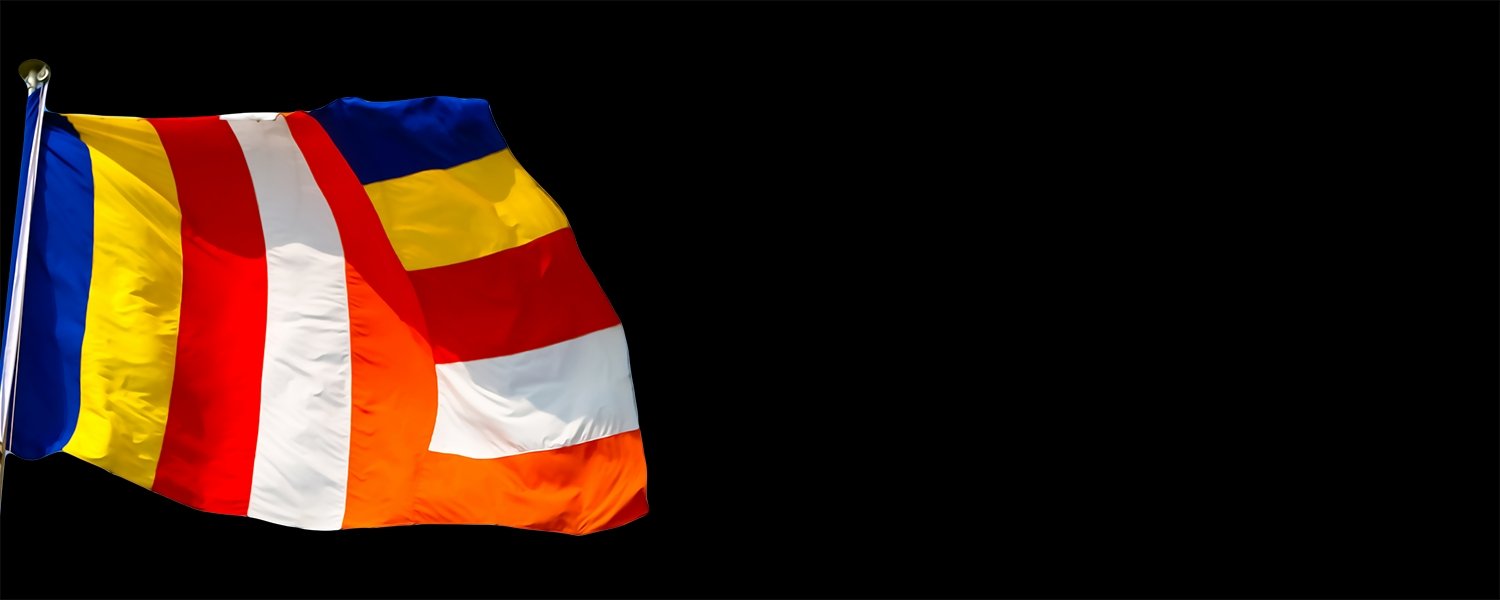The Meaning of the Buddhist Flag
The Buddhist flag or Buddhist flag is a modern creation designed jointly by Mr. J.R. de Silva and Colonel Henry S. Olcott to mark the revival of Buddhism in Ceylon in 1880.
- It was accepted as an international Buddhist flag by the World Buddhist Congress of 1952.
Colonel Olcott designed a flag from the six colors of the aura that he said glowed around the Buddha's head after the Enlightenment.

The first five bands of the Buddhist flag are of five colors.
- Blue: Universal Compassion
- Yellow: The Middle Way
- Red: Blessings
- White: Purity and liberation
- Orange: Wisdom
The sixth color is a conglomeration of the five, but for design purposes it has been separated into its constituent colors.
The colonel's flag later became the symbol of Buddhist unity.
Subsequently, it was used throughout the world and in nearly 60 countries during Buddhist festivals, particularly during Vesak celebrations.
The Colonel Olcott was one of the greatest American Buddhists who devoted his later life entirely to the peoples of Asia.
He is known as the father of the Buddhist education movement since he initiated the establishment of nearly 400 Buddhist schools and colleges in Sri Lanka.
The legend of the Buddhist flag
During the first week after enlightenment, the Buddha sat under the Bodhi tree, deeply experiencing the joy of freedom and tranquility. His mind was calm and blissful and therefore free from all kinds of disturbing thoughts.
During the second week, he sat in gratitude to the tree that sheltered him during his struggle for enlightenment.
The third week, through his mind's eye, the Buddha saw that the gods were unsure of his enlightenment. The Buddha then built a golden bridge in the air and walked up and down for a whole week to prove the power he had achieved.
During the fourth week he created a jeweled chamber where he meditated on what was later known as the Abhidhamma. At that time his mind became so pure and serene that six colored rays, namely blue, yellow, red, white, orange, and the combination of these five colorsemanated from his body.
The meditation practice and the experience of colors have a significant connection. A meditation instructor is often heard asking practitioners, “What colors have you seen?” Because color is linked to a specific chakra or energy center in the body and, therefore, the color that we see during meditation reflects the element that acts most on us.

Thus, each color that the Buddha's body radiated after his enlightenment represents a specific aspect of the "total truth "that he had in store for humanity.
The blue ray that radiated from the Buddha's hair symbolizes the spirit of universal compassion for all beings.
The yellow color that radiated from the Buddha's skin represents the middle way which avoids the two extremes.
The red light that came from the flesh of the Buddha symbolizes the blessings that come from practicing the Buddha's teachings .
The white color that the Buddha's bones and teeth gave off represents the purity of the Buddha's teaching.
The orange color that emanates from the palms, heels and lips of the Buddha signifies the wisdom of his teaching.< /p>
The mixture of these five colors symbolizes the universality of the truth of the Buddha's teaching. While the vertical stripes of the flag represent eternal world peace, the horizontal stripes represent harmonious living.
Thus, the emanation of colors from the Buddha's body just after his enlightenment briefly indicated the type of teachings that the Buddha would dispense to humanity.
And the use of flags during Buddha Purnima could be seen as the eagerness of devotees to receive the aura of "all goodness" that the colors of the flag symbolize.










































